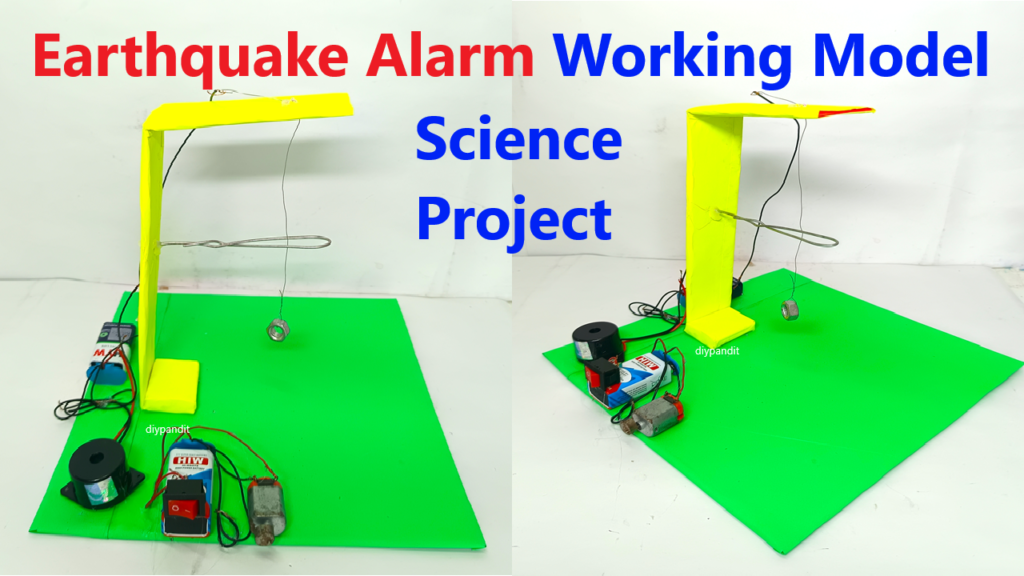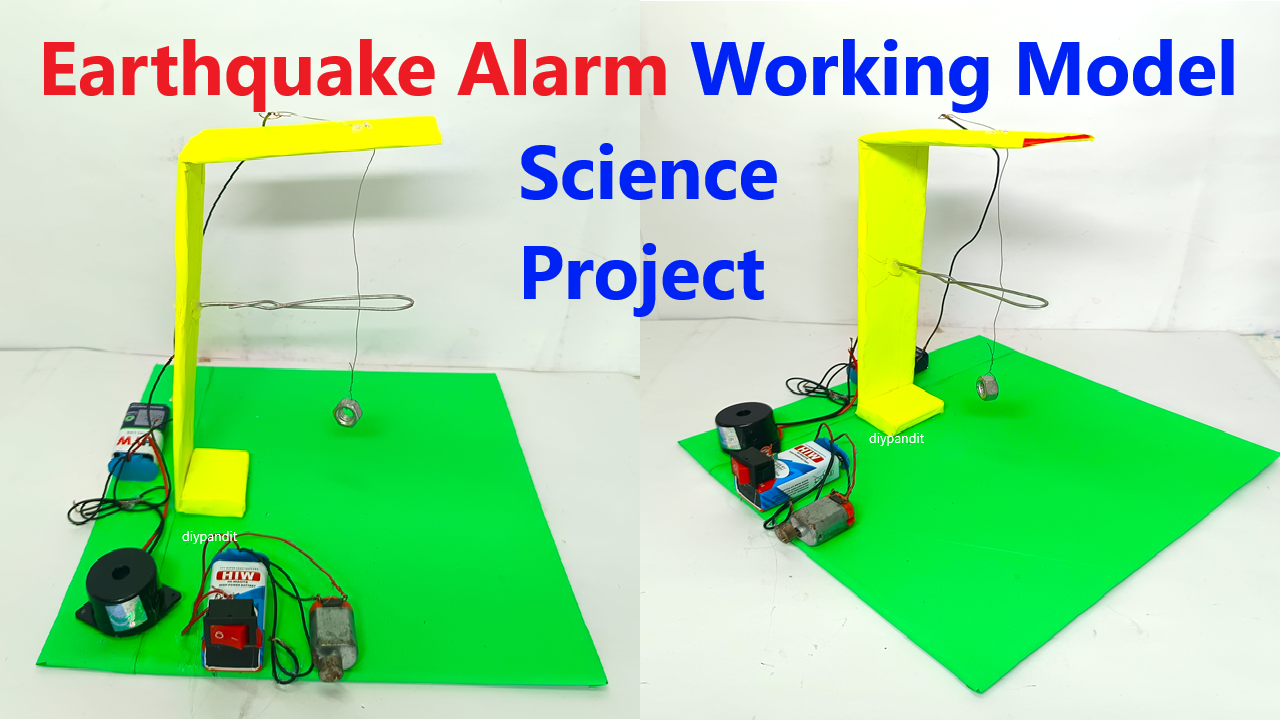This project will demonstrate how an earthquake alarm works using cardboard, color paper, a buzzer, a 9V battery, and metal wire. The alarm will be triggered by vibrations or movement, simulating how real earthquake warning systems function.

Materials Required:
Cardboard (for base and structure)
Color paper (for decoration and labels)
Buzzer (to produce the alarm sound)
9V battery & battery clip (to power the circuit)
Metal wire (GI wire) (to act as a vibration sensor)
Small weight (nut/washer) (to enhance sensitivity)
Glue, scissors, and tape
How the Model Works:
- The metal wire acts as a switch.
- When the base shakes (earthquake simulation), the wire touches a metal contact, completing the circuit.
- This turns on the buzzer, signaling an earthquake alert.
Steps to Make the Model:
1. Create the Base & Structure
- Take a large cardboard piece as the base.
- Make a small cardboard house/building to represent a city.
- Cover it with color paper and draw doors, windows, and cracks (for earthquake effects).
2. Set Up the Metal Wire Sensor
Cut a small vertical cardboard piece (about 10 cm tall).
Attach a thin metal wire at the top and bend it downward like a loose hook.
Place a metal contact (another wire or metal strip) on the base, positioned slightly below the loose end of the first wire.
How It Works:
- In normal conditions, the wire does not touch the metal contact.
- When shaken, the wire touches the metal contact, completing the circuit and activating the buzzer.
3. Connect the Circuit
- Connect one end of the buzzer to the battery’s positive terminal.
Connect the other end of the buzzer to the metal contact on the base.
Attach the loose wire sensor to the negative terminal of the battery. - When the wire sensor moves due to an earthquake, it completes the circuit, and the buzzer sounds!

